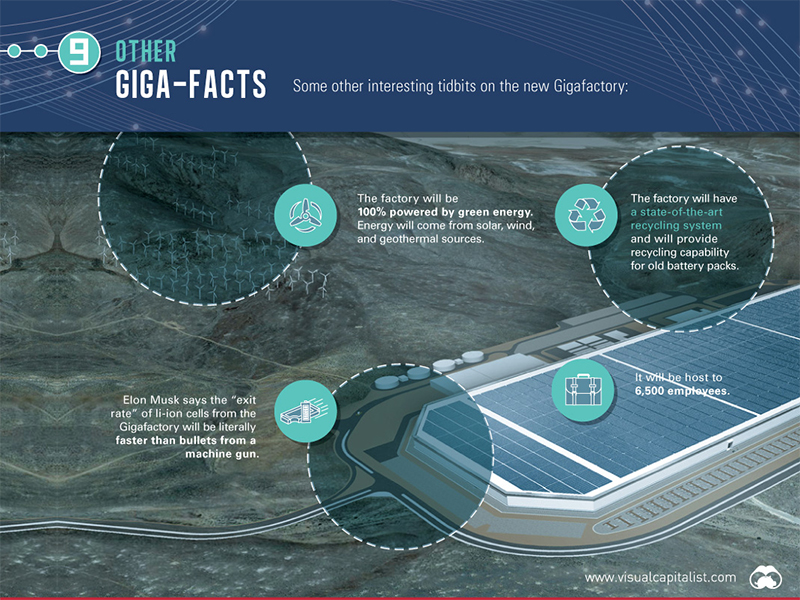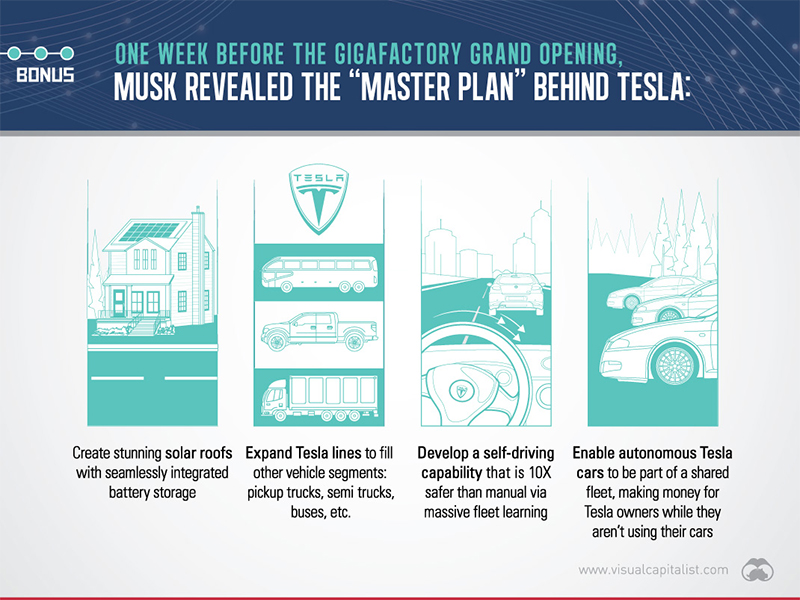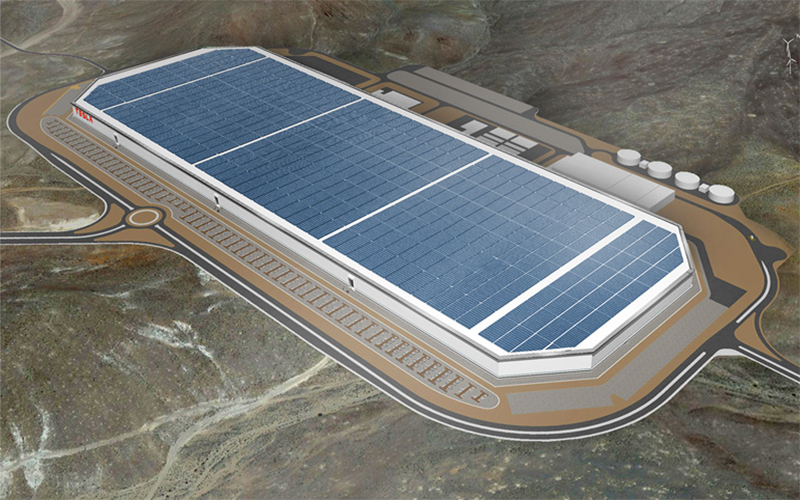Putting the New Tesla Gigafactory in Perspective
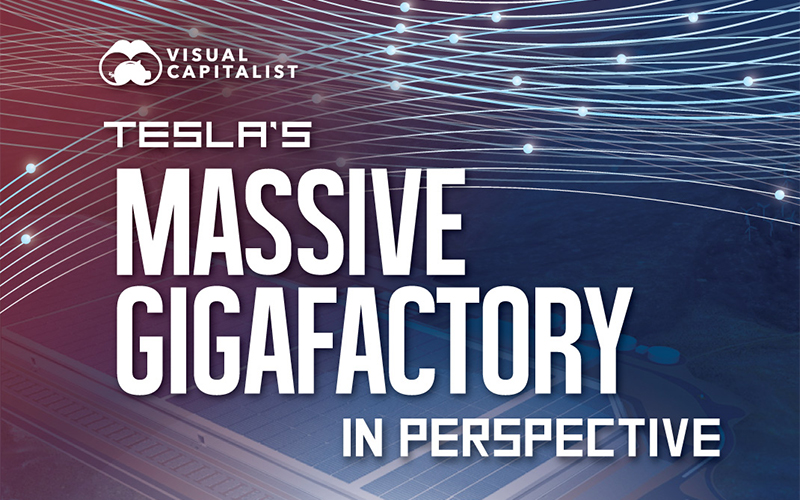
Tesla Motors officially unveiled its massive new Gigafactory 1 at a grand opening event on July 29, 2016, here are 9 slides that put the worlds largest factory in perspective.
The ultimate objective of the first Gigafactory is simple, but it is not for the faint of heart.
Battery costs are the most expensive component of electric vehicles, and the multi-billion dollar Gigafactory aims to add scale, vertical integration, and other efficiencies together to bring lithium-ion battery costs down.
Costs have already come down faster than most analysts have predicted, and the Gigafactory could be the final catalyst to get below the industry’s holy grail of $100 per kWh.
Cheaper battery packs could make electric vehicles competitive with traditional gas-powered vehicles – and if that happens, it is a game-changer for the auto industry.
It’s important to note that the Gigafactory is fairly modular by design, and construction is not completed in full yet. That said, here is what we know about the new Tesla Gigafactory and its possible impact.
1. The Tesla Gigafactory 1 Will Be the Largest Building in the World by Footprint
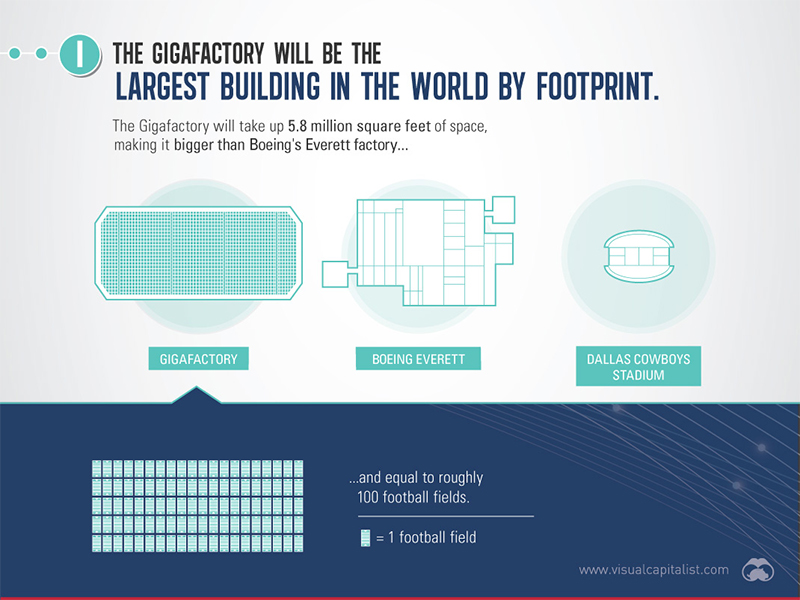
The Gigafactory will take up 5.8 million sq. ft of space, making it bigger than Boeing’s giant facility in Everett, WA. That’s roughly equivalent to 100 football fields.
While the Gigafactory will certainly be one of the largest factories by volume, it will be hard to compete with Boeing for first place there. Boeing’s Everett facility, which is six storeys high to accommodate the construction giant planes, has a total of 472 million cu. ft of volume.
2. The Scale Will Make Production of Lithium-Ion Batteries Way Cheaper
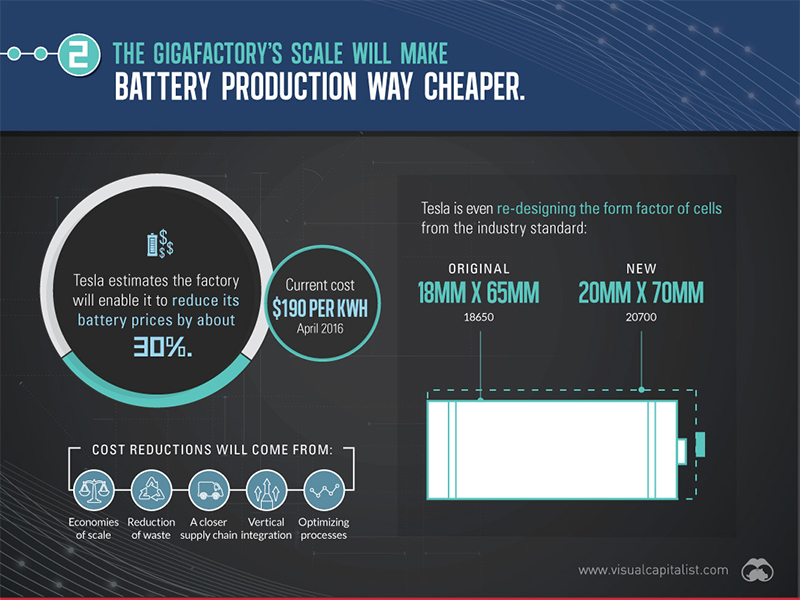
Tesla recently stated that its current battery cost is $190 per kWh for the Model S.
The Gigafactory aims to reduce battery costs by 30%. Tesla expects this to happen through vertical integration, adding economies of scale, reducing waste, optimizing processes, and tidying up the supply chain.
3. Tesla Initially Planned To Produce 50 GWH of Battery Packs By 2020
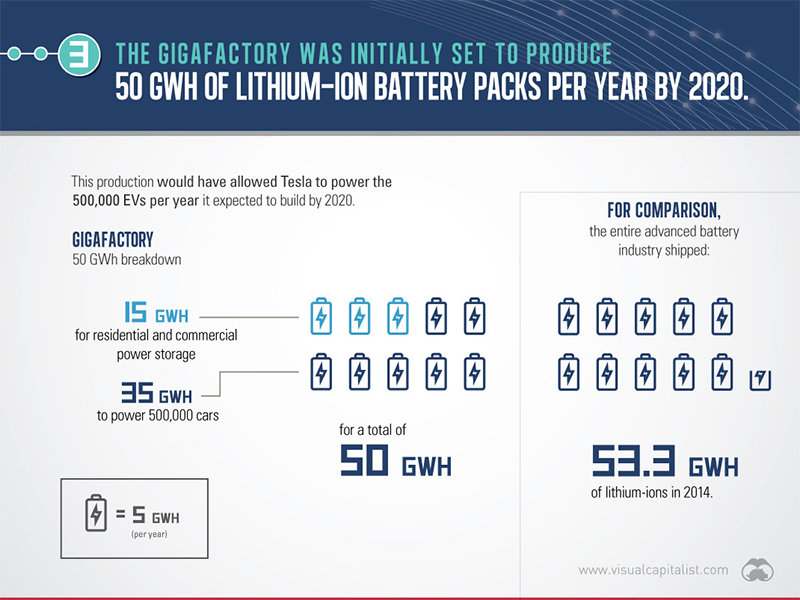
Tesla CEO Elon Musk has also stated that the company is changing the form factor of the batteries away from the industry standard. Lithium-ion cells used for notebook computer batteries are typically produced in an 18650 cell format (18mm x 65mm), but Tesla will produce them in a 20700 cell format (20mm x 70mm).
4. However, Tesla Has Now Moved That Target Forward By Two Years
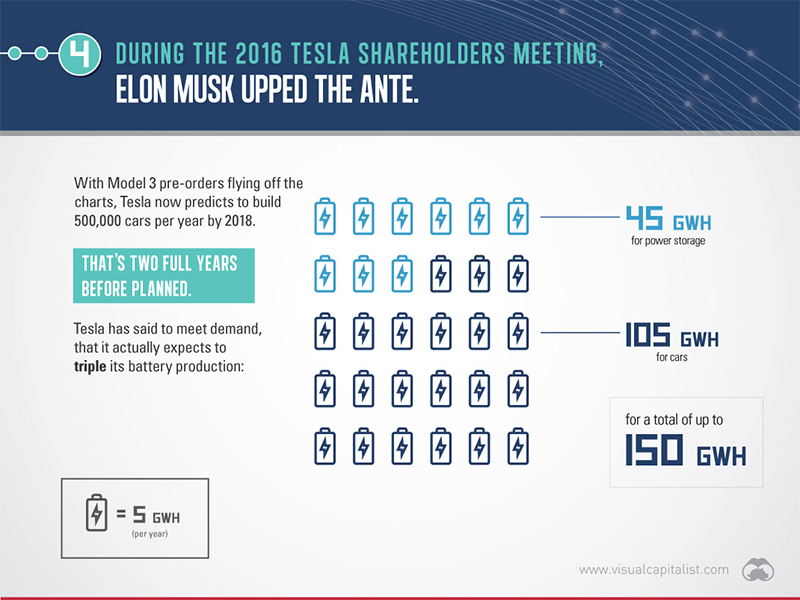
Now, it’s anticipated that Tesla could triple battery production to meet this demand. This means it could produce up to 105 GWh of battery cells, and 150 GWh of completed battery packs. Musk says the current factory size will be sufficient for this ramp-up.
5. This Will Require Serious Amounts of Raw Materials
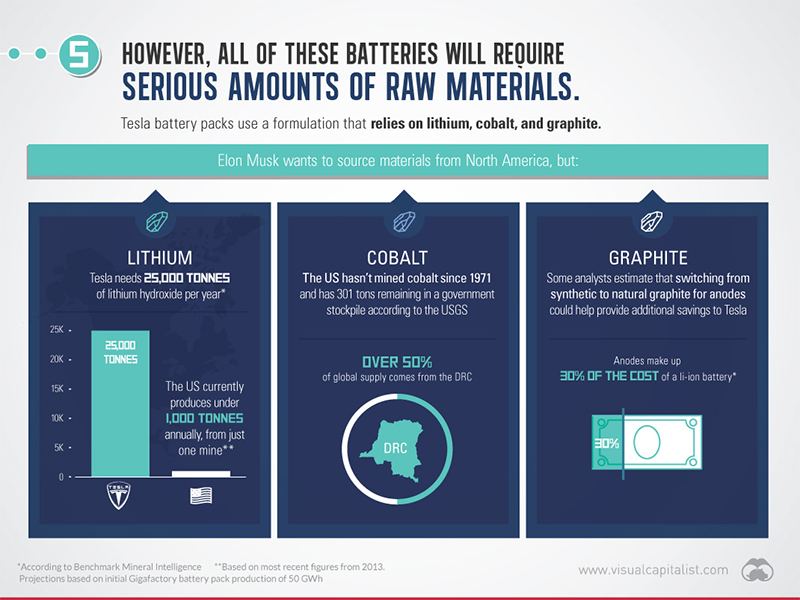
We previously showed the extraordinary amounts of materials needed to build a Tesla Model S. The batteries, which currently use an NCA cathode formulation, need lithium, graphite, cobalt, nickel, and other base metals that aren’t used as much in an internal combustion engine.
This has created a significant rush for suppliers of these raw materials. It’s also something we are covering in our five-part Battery Series, in which we are looking at lithium-ion battery demand, as well as the materials that will need to be sourced as electric cars go mainstream.
6. If Tesla Hits Its 2018 Projection, It Will Be a Serious Milestone for EVS
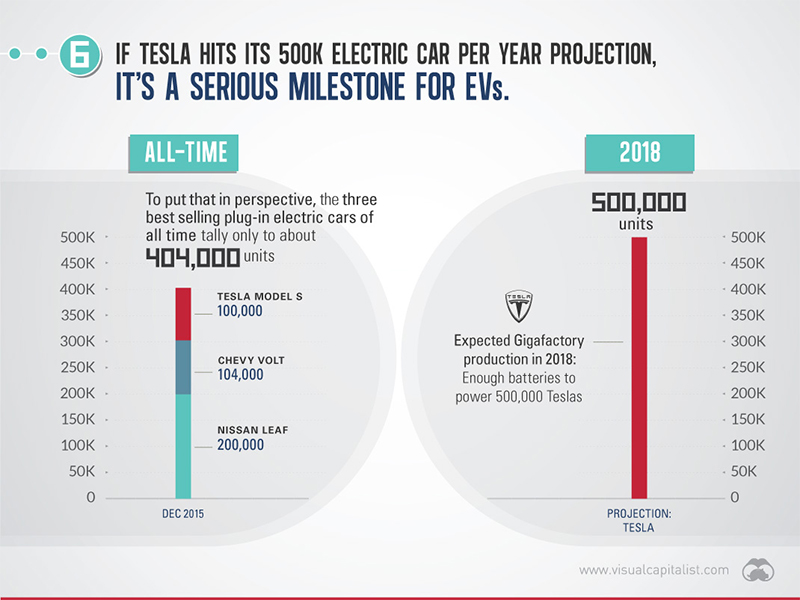
Tesla aims to sell 500,000 cars in 2018. If it hits the mark, it will be a big milestone for the electric vehicle market.
To put that number in perspective, the total amount of sales (all-time) for the three most popular EV models (Leaf, Volt, Model S) added up to only about 404,000 cars as of December 2015.
7. This Would Also Put Tesla On Par With Major Auto Brands
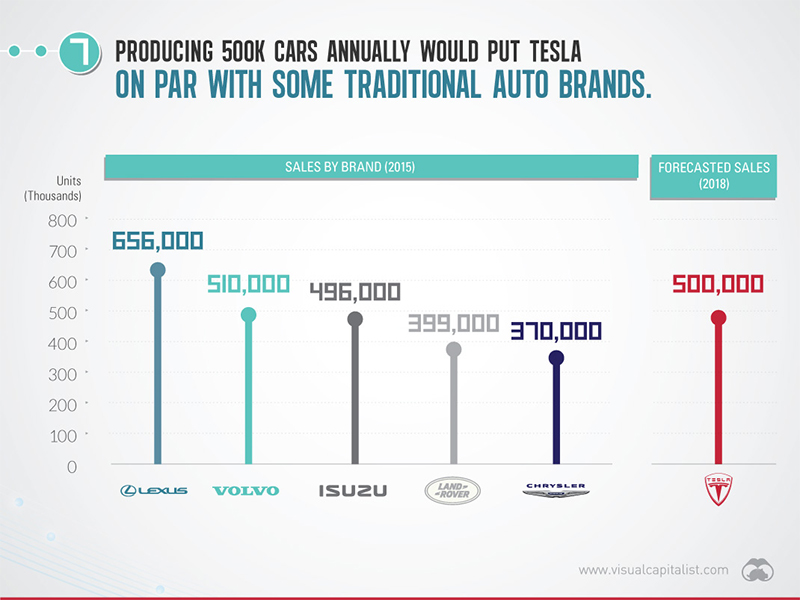
Tesla is still a small auto manufacturer – but if it meets its stated production goal of 500,000 vehicles in 2018, that will be comparable with brands like Chrysler, Land Rover, Isuzu, Volvo, and Lexus.
This still doesn’t compare to a giant like Ford, which sold 780,354 F-series pickups alone in 2015. But, it is a step in the right direction for Elon Musk’s company.
8. For Every 500,000 Electric Cars on the Road, 192 Million Gallons of Gas Is Saved
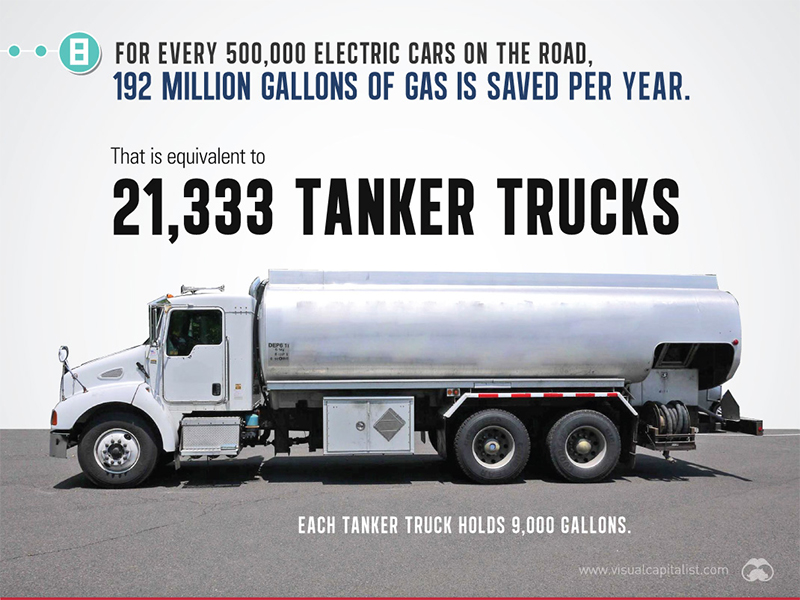
That’s equal to 290 Olympic-sized swimming pools filled with gasoline, or 21,333 tanker trucks.
Even taking into account coal power and pollution, driving a Tesla is already far better for the environment in most states.
The Gigafactory will be 100% powered by renewable energy. It’ll have solar panels covering the roof, while also drawing power from wind and geothermal.
It will employ 6,500 people, and it will have a state-of-the-art recycling system to make use of old battery packs.
Elon Musk says the “exit rate” of lithium-ion cells from the Gigafactory will literally be faster than bullets from a machine gun.
Last week, Elon Musk unveiled the “master plan” behind Tesla.
The Tesla Gigafactory will ultimately help to make these ambitions possible.
Source: Visual Capitalist

